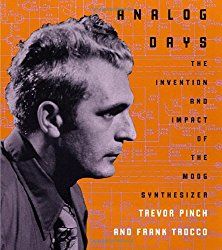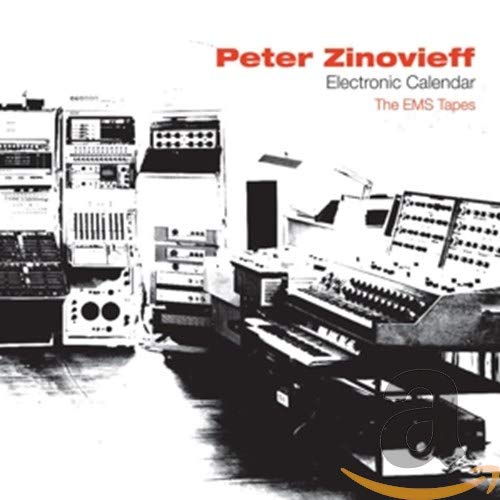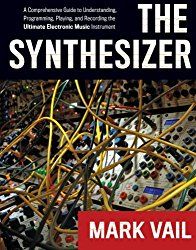Tuesday, September 09, 2025
Otterly original modules from Otter Mods 🦦🎛️ #Knobcon
video upload by CatSynth TV
"Elton Glover of Otter Mods gives us a tour of their offerings, including the O.T.T.e.R pattern generator, Itero step sequencer, and Triquetra triple shift register module.
For more information, please visit https://ottermods.com
For more on Knobcon, please visit https://knobcon.com
0:00 Introduction
0:37 O.T.T.e.R pattern generator
1:56 Itero step sequencer
2:36 Triquetra triple shift register module
5:36 Conclusion
Please consider supporting this channel to help us bring you more synthesizer tutorials and other content.
Merch: https://shop.catsynth.com
Patreon: / catsynth
Ko-Fi: https://ko-fi.com/catsynth
"Triquetra is a linear feedback shift register module, with three independent registers that have their own Gate and CV output. The clock for the second and third register are normalled to the first, but can be supplied with their own clocks to get a wide range of versatility from the module. A clock source is required to generate bits. The toggle switch will change between Looped and Free Run mode.
Each register has an attenuator for the CV output.
The Gate mode can be switched from a 50% clock cycle when the last bit is high, to a high output as long as the last bit is high. This gives the result of switching between either a “Trigger” style or “Leggato” style Gate. The Gate mode can be switched at any time by pressing all three buttons at the same time.
Each button corresponds to the three registers, and will cycle through the bit generating algorithms (seven in total). The LED will cycle through different colors corresponding to the following:
RED = LFSR1
GREEN= LFSR2
RED/GREEN= Small Number Modulus
BLUE= Fibonacci Sequence
RED/BLUE= Prime Number Sequence
GREEN/BLUE= Large Number Modulus
RED/GREEN/BLUE= Otter Mods Cryptograph"
Alternate panel design below.
"The O.T.Te.R. is a unique and versatile 8-step pattern generator style sequencer. It is driven from an external clock fed to the Clk In jack, or from its own internal clock source. In addition, there is a Clk Out that is a copy of the Int/Ext clock being used.
Each of the rotary switches (A, B, C) allow you to select a clock division of the master clock signal, which influences the order and regularity of the generated pattern. Alternatively, you can select an external source for each of the encoders (at the jacks labeled Logic A, Logic B, Logic C) that override the clock division. Each input jack works best with gate signals of at least +2V.
The Inhibit input will mute all steps of the sequence while there is a gate present. Likewise, a gate at the Reset input will reset the internal clock back to zero. Reset only affects the A, B, or C switches not using external timing signals.
The O.T.Te.R. also features a CV Shift input that can be used to offset the voltage (either positive or negative) produced at the CV Out jack. This can be used to momentarily transpose the CV generated for more variety.
Each of the sliders changes the output voltage of that step from 0-10V. Each step lights up to signify when it is the active step in the pattern. The module is capable of running at audio rate clock signals, which can produce an FM-like effect when paired with a VCO."
Alternate panel design below.
"The Octet Itero is a traditional 8-step sequencer. Each step can be muted, which in effect will produce 0V at the various outputs. The sequencer will advance when a trigger/gate is supplied to the Clock input. Likewise, a trigger/gate supplied to the Reset input will reset the sequencer to step 1. The sequencer also has a manual Step button to advance once per press. The Seq Length allows you to choose the overall length from 1 to 8 steps. Each step has its own knob to set the voltage amount sent to each of the respective outputs when that step is active. Note that the available voltage at each step will vary on which output you use along with the amount that output is attenuated.
There are separate Trigger and Gate outputs. The Trigger output will produce a short (approx. 10ms) pulse that can be used as an event timing signal every time the sequencer advances to an active step (non-muted). The same event will be produced at the Gate output, however the length can be adjusted with the Gate knob anywhere from 10ms to around 5 seconds. A new Gate can only be produced after the current Gate event finishes.
The Transpose input will offset all the output CV values (with respect to how much they are attenuated). The corresponding Transpose knob will affect the amount of CV offset applied to the CV outputs.
There are four different CV outputs available: 0-10V A; 0-10V B; 0-5V; and -5V to +5V. Each of these outputs has its corresponding attenuator."
Alternate panel design below.
PREVIOUS PAGE
NEXT PAGE
HOME













© Matrixsynth - All posts are presented here for informative, historical and educative purposes as applicable within fair use.
MATRIXSYNTH is supported by affiliate links that use cookies to track clickthroughs and sales. See the privacy policy for details.
MATRIXSYNTH - EVERYTHING SYNTH













© Matrixsynth - All posts are presented here for informative, historical and educative purposes as applicable within fair use.
MATRIXSYNTH is supported by affiliate links that use cookies to track clickthroughs and sales. See the privacy policy for details.
MATRIXSYNTH - EVERYTHING SYNTH
Subscribe to:
Post Comments (Atom)






























No comments:
Post a Comment
Note: To reduce spam, comments for posts older than 7 days are not displayed until approved (usually same day).